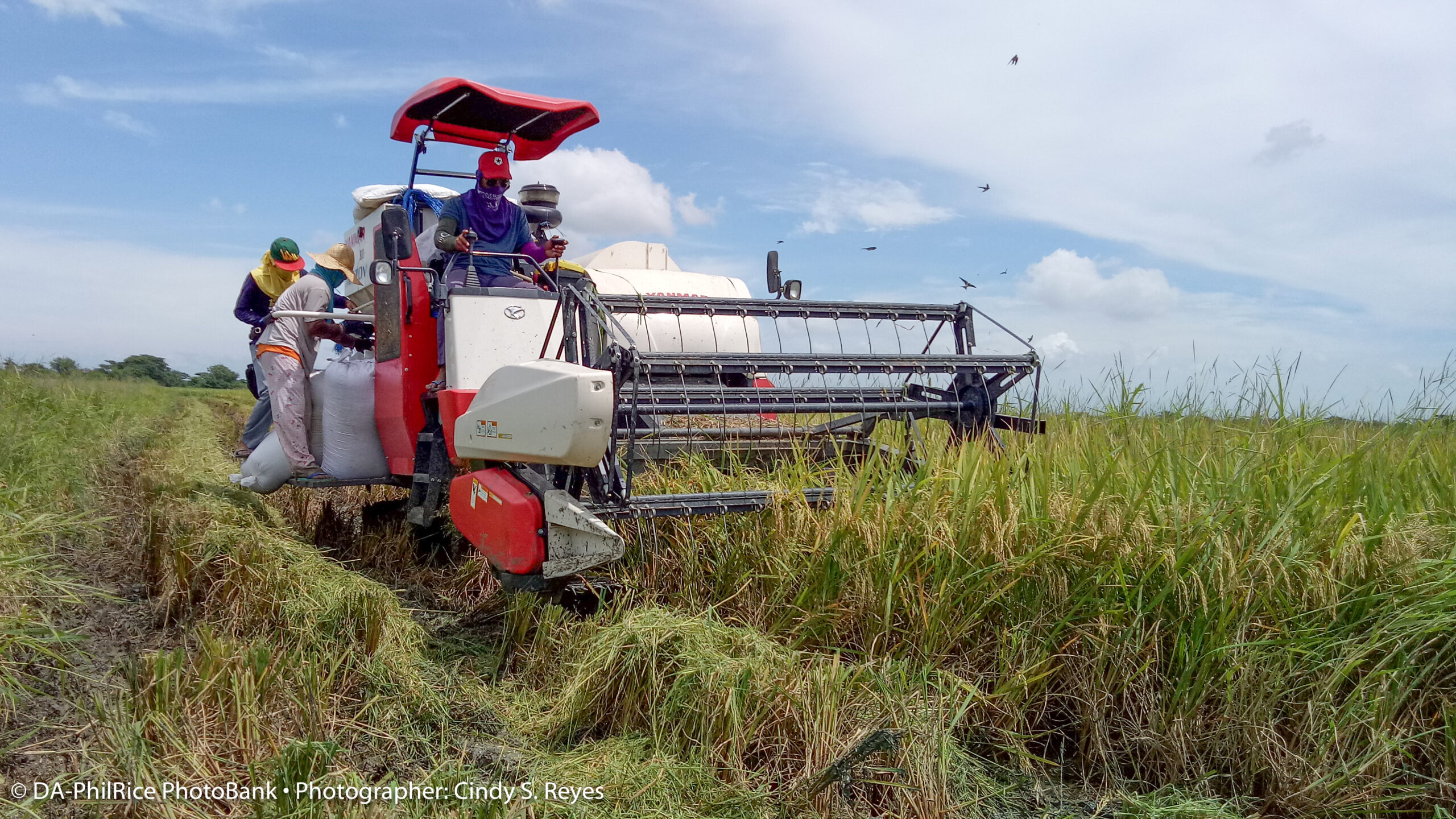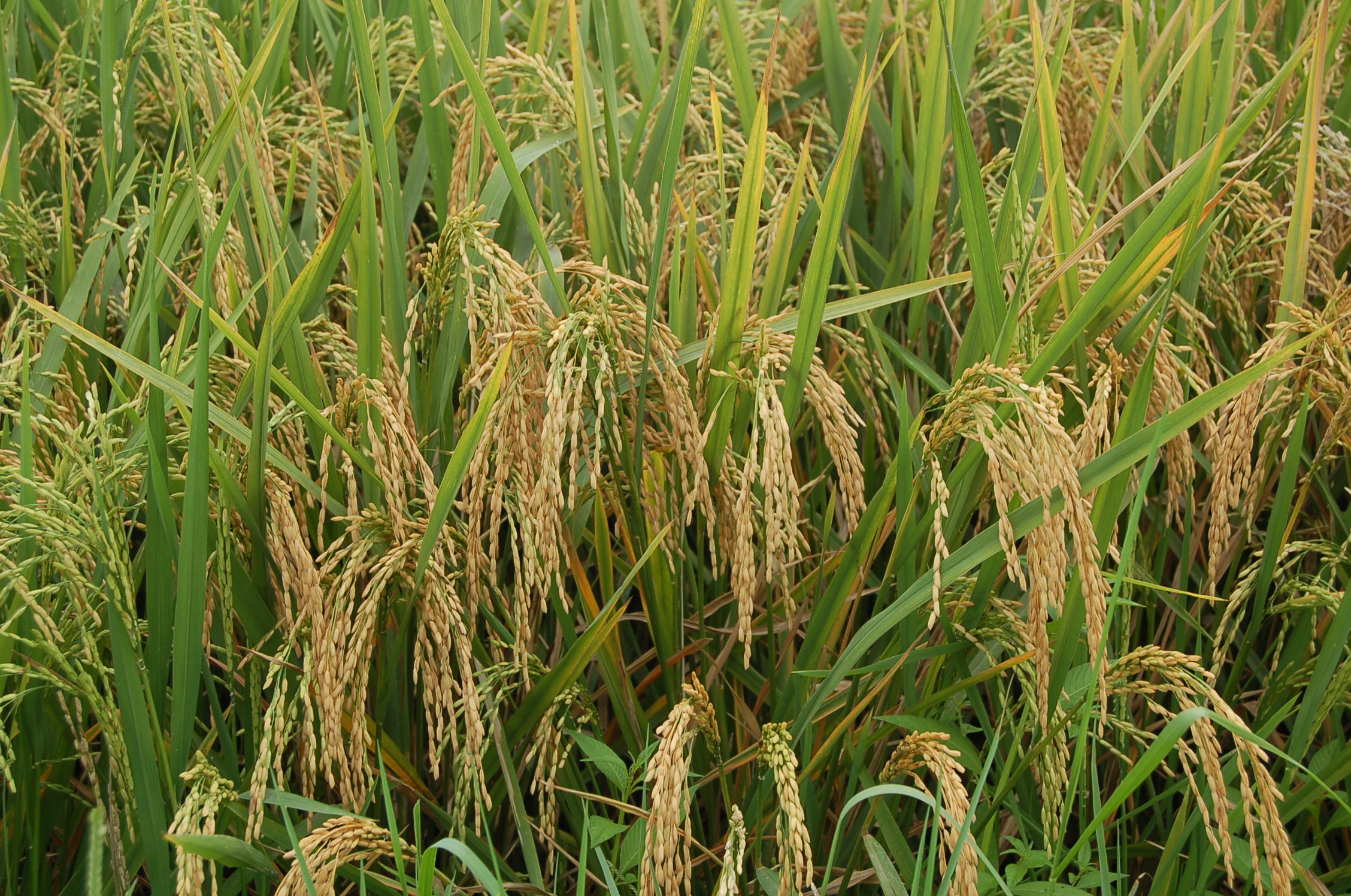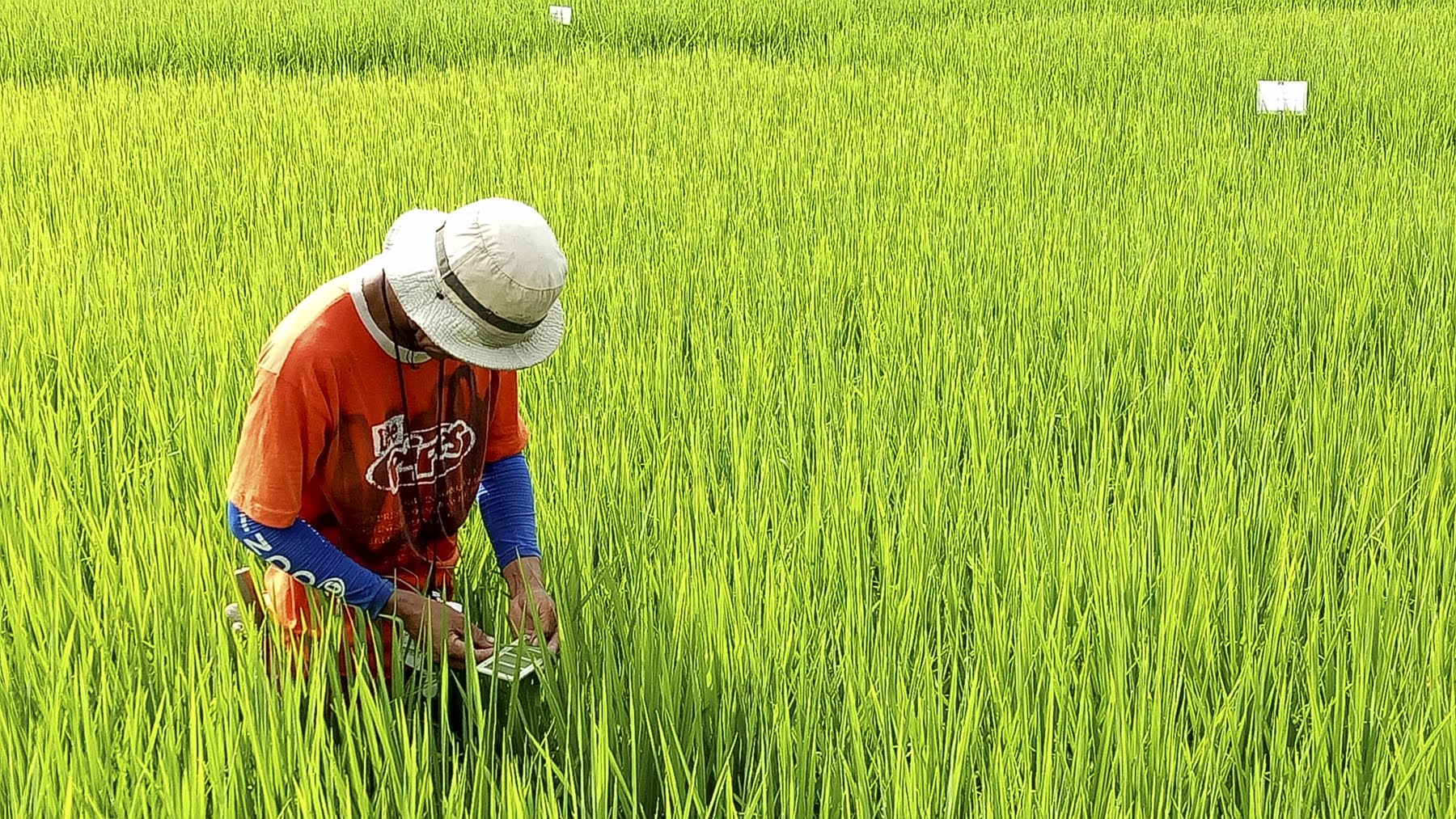Text and Photos by Henrylito D. Tacio
Additional Photos: PhilRice
In order for rice crops to give optimum yield, they have to be fertilized well. A recent study showed that if farmers provide them with balanced fertilization, they can cut their expenses by about P4,000.
Nutrient experts from the Philippine Rice Research Institute (PhilRice), a line agency of the Department of Agriculture (DA), said farmers could save P2,000-P4,000 if they complement inorganic fertilizer application with organic.
“One hundred cavans of palay produces 5 tons of rice straw,” said Wilfredo B. Collado, PhilRice’s nutrient management expert. “If this is incorporated into the soil and decomposed, it can produce 30 kilograms of nitrogen, which is equivalent to 1.3 bags (65 kilograms) of urea.”
Rice cultivation is dominated by chemical fertilizers. Nitrogen (N), phosphorus (P), and potassium (K) are the most applied nutrients for rice production.
Among these three chemicals, N is the most limiting element in almost all soils. Thus, proper application of N fertilizers is vital to improve crop growth and grain yields, especially in intensive agricultural systems, says the Laguna-based International Rice Research Institute (IRRI).
“Since 1960, the use of chemical nitrogen fertilizers in agriculture has increased by nine-fold and phosphorus by three-fold,” says Organic Farming: Global Perspectives and Methods, adding that these chemicals have deteriorated soil health and polluted the environment.
“The role of chemical fertilizers in rice yield is about 59% to 69% only, but its use with organic nutrient sources can help in improving rice grain yield and soil carbon storage,” the authors said. “Use of organic and inorganic nutrients is responsible for obtaining 0.78% to 117% higher yield compared to chemical fertilizers alone.”
Balanced fertilization was launched through the “Abonong swak (Swak sa budget, swak sa palay)” campaign during the DA-PhilRice Lakbay Palay held in the first week of April. It was promoted to help cut fertilizer costs in rice production amidst the rising price of the commodity.



According to Collado, it is important for farmers to know the specific nutrients and the amount needed by their crop to avoid applying excessively or sparingly. These can be identified through the minus-one element technique, leaf color chart, leaf color computing app, and rice crop management advisory service.
Around 500 onsite participants and 15,000 online viewers of the two-day Lakbay Palay were taught organic-inorganic fertilizer combinations to follow based on their budget and target yield. The following recommendations were specified:
To achieve 3-4 tons per hectare (t/ha), 3-4 tons of rice straw 30 days after transplanting (DAT) is scattered and decomposed. Ten bags of decomposed or air-dried chicken manure, commercial organic fertilizer, or vermicompost are applied at 14 DAT.
For varieties that mature in 100-110 days, one bag of 14-14-14 at 0-14 DAT or 10-14 days after sowing (DAS) is applied; and one bag of urea and 0.5 bags 0-0-60 at 28-32 DAT or 38-42 DAS.
On the other hand, varieties maturing in 111-120 days have to be applied with one bag of 14-14-14 at 0-14 DAT or 10-14 DAS; 1 bag of urea and 0.5 bags 0-0-60 at 32-36 DAT or 48-53 DAS.
Meanwhile, varieties that can be harvested within 121-130 days must be fertilized with one bag 14-14-14 at 0-14 DAT or 10-14 DAS; and one bag and 0.5 bags 0-0-60 at 36-40 DAT or 58-62 DAS.
Achieving 5-6 t/ha entails spreading and decomposing 5-6 tons of rice straw 30 DAS; applying ten bags of decomposed or air-dried chicken manure, commercial organic fertilizer, or vermicompost 14 DAT; and mixing 1-2 kilograms of zinc-sulfate in seedbed 7-10 DAS and 2-4kg 14-14-14 at 10-14 DAS.
If varieties used mature in 100-110 days, two bags of 14-14-14 or 16-20-0 at 0-14 DAT or 10-14 DAS, one bag of urea at 18-22 DAT or 24-28 DAS are applied. In addition, one bag of urea and 0.5 bags 0-0-60 at 28-32 DAT or 38-42 DAS are also applied.
For varieties that mature in 111-120 days, crops are given with two bags of 14-14-14 or 16-20-0 at 0-14 DAT or 10-14 DAS, one bag of urea at 22-26 DAT or 32-36 DAS; and one bag of urea and 0.5 bags 0-0-60 at 32-36 DAT or 48-53 DAS.
Two bags of 14-14-14 or 16-20-0 at 0-14 DAT or 10-14 DAS, one bag of urea at 26-31 DAT or 36-40 DAS, and one bag of urea and 0.5 bag 0-0-60 at 36-40 DAT or 58-62 DAS are also vital elements for varieties maturing in 121-130 days.
Higher target yield of 7-8 t/ha needs 7-8 tons of rice straw applied with 30 DAS; 10 bags of decomposed or air-dried chicken manure, commercial organic fertilizer, or vermicompost 14 DAT, 1-2kg zinc-sulfate in seedbed 7-10 DAS, and 2-4kg 14-14-14 at 10-14 DAS.
For varieties that mature in 100-110 days, the crops are fertilized with two bags of 14-14-14 at 0-14 DAT or 10-14 DAS, two bags of urea at 18-22 DAT or 24-28 DAS; 2 bags of urea and 0.5 bags 0-0-60 at 28-32 DAT or 38-42 DAS.
Varieties that can be harvested in 111-120 days must be applied with two bags of 14-14-14 at 0-14 DAT or 10-14 DAS, two bags of urea at 22-26 DAT or 32-36 DAS, and two bags of urea and 0.5 bags 0-0-60 at 32-36 DAT or 48-53 DAS.
Rice maturing in 121-130 days requires two bags of 14-14-14 at 0-14 DAT or 10-14 DAS, two bags of urea at 26-31 DAT or 36-40 DAS, and two bags of urea and 0.5 bag 0-0-60 at 36-40 DAT or 58-62 DAS.
“Aside from saving money, organic fertilizer application has a long-term benefit as it improves soil fertility,” said Dr. Gina P. Nilo, assistant director of the Bureau of Soils and Water Management.
Rice is one of the country’s most important crops. According to the Bureau of Agricultural Statistics (BAS), Filipinos spend more on rice than any other food. ABAS survey showed that Filipinos, especially those from low-income households, are depending solely on rice more than ever for their daily dietary energy supply and dietary protein because it remains the most affordable food in the country.
On average, Filipinos consume 114-120 kilograms of rice per capita per year. That’s almost double the world average of 65 kilograms per capita per year, according to Dr. Eufemio Rasco, Jr., former PhilRice director.
The ancient Indian name for rice, dhanya, meaning “sustainer of the human race,” indicates its age-old importance. In Java, where it is the gift of the goddess Dewi Siri, people believe that rice has a soul and maybe spoken to as a relative.
Although rice is basically a complex carbohydrate, its protein contains all eight of the essential amino acids found in many other foods. Low in sodium and fat, with no cholesterol or gluten, it is a boon to weight worriers and those allergic to other grains. It is also low in fiber and easily digested. Eating one-half cup of cooked rice can furnish 82 calories of energy – enough to give a person the energy to walk 26 minutes.
“Any country in the world, if it can produce its staple locally, would do it because it’s difficult to depend on the world market for your staple’s supply,” said Dr. Frisco M. Malabanan, DA rice program consultant.
Although the Philippines is basically an agricultural country, it has not been self-sufficient in rice. In fact, the country is currently the world’s major importer of rice. There are several reasons for this. Yield growth and production for the last two decades have been minimal and, at times, even stagnated or declined, resulting in increased importation.
But there’s good news. Rice farmers had produced almost 20 million metric tons (MMT) of palay in 2021, hitting an all-time high record, data released by PSA showed.
The new record high palay output of 19.96 MMT, which was driven by the strong rice harvest from the first to the fourth quarter, is 3.4% higher than the previous production of 19.3 MMT in 2020.
“We would have easily breached 20MMT as Typhoon Odette damaged more than 130,000 MT of palay. [This] shows, however, that we are on the right track in our continuing efforts to increase the production of our major staples, in partnership with millions of our farmers, local government units, private sector, and agri-fishery industry stakeholders,” said Agriculture Secretary William D. Dar.

